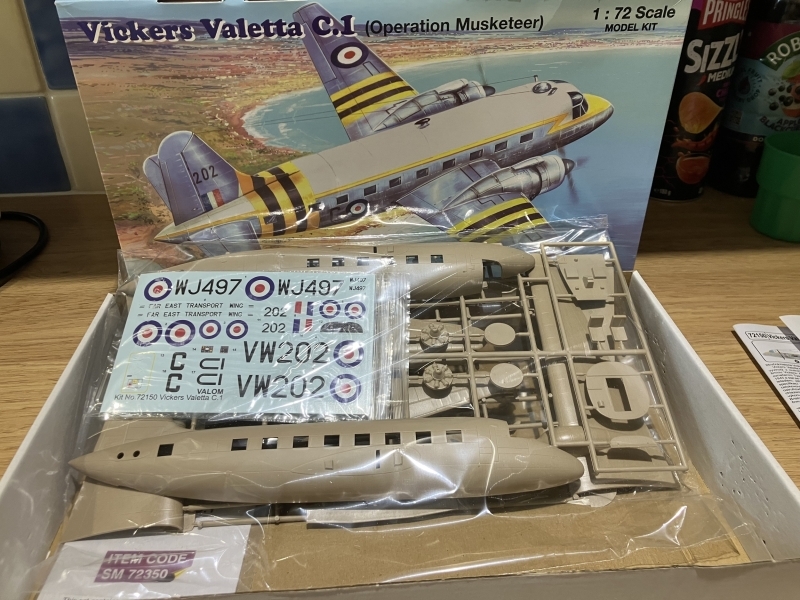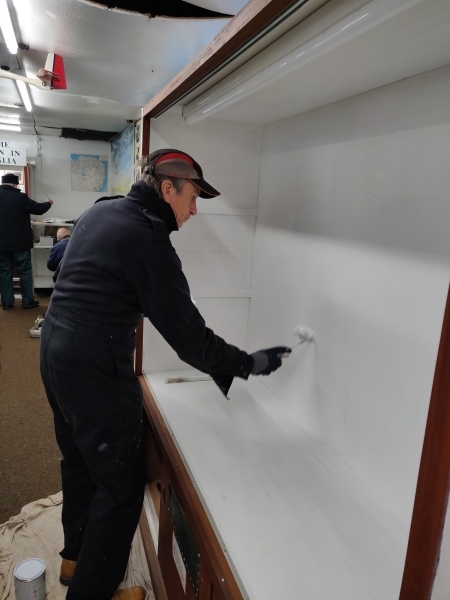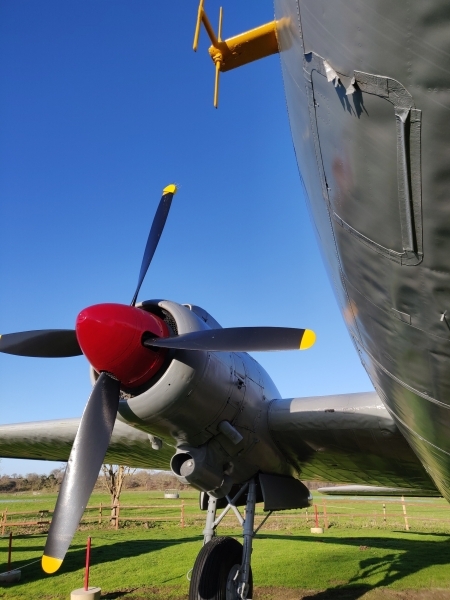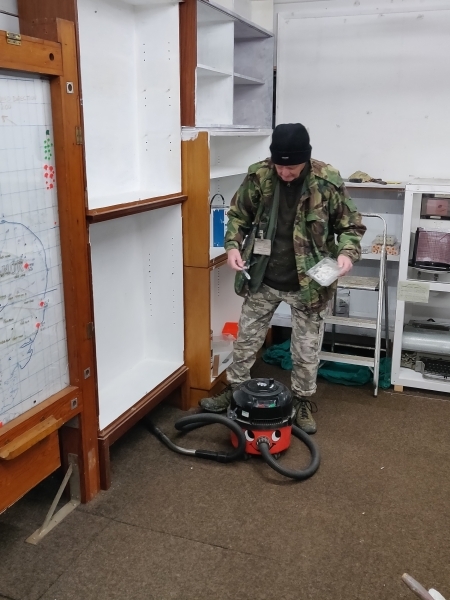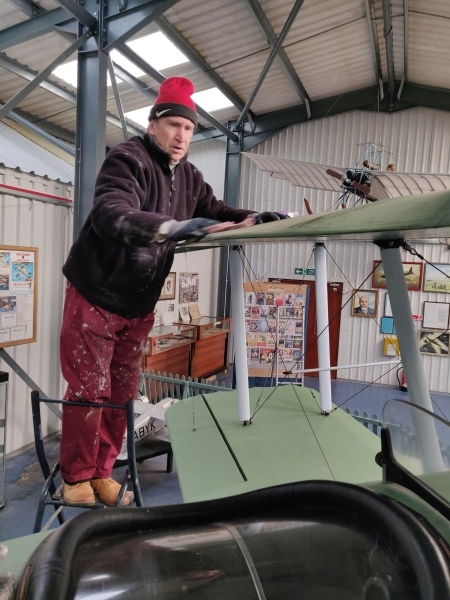NASAM Update as of the 23rd Jan 2024
In This Edition
Summary of Contents
In the section entitled From The Teams, first up we have Malcolm’s update on the museum models and the aircraft he is working on at the moment.
Next, we have Mark K, who has been standing in for Barry in providing the Painters update for the last few Tuesdays and his contribution plus photos can be found next in the “From The Teams” section.
Last, but by no means least is an update from Graham in Archives who has provided a magazine article giving an insight into the thinking back in 1938 as to the shape of aircraft to come, plus a freebie with the magazine.
Change To Table of Contents
Regular readers will note that in this edition there is a change to how the “Table of Contents” is being displayed. This is unfortunate, but the version of software that I have been using to display the “Table of Contents” has been discontinued by the software writers. I have therefore had to change the look of this piece of software to ensure backward compatibility with the blogs already produced. This version will be inserted automatically into the old blogs so that the table of contents continues to be shown and be usable to go directly to an article or a set of photos.
Museum News
Museum Reopening Date
 We are currently closed for the winter maintenance period. The Museum is due to reopen again on Saturday the 17th of February 2024 in time for the half-term holidays. As of that date, and until further notice, we will revert to our normal opening days and times as follows:
We are currently closed for the winter maintenance period. The Museum is due to reopen again on Saturday the 17th of February 2024 in time for the half-term holidays. As of that date, and until further notice, we will revert to our normal opening days and times as follows:
- We are open every Wednesday, Saturday, Sunday,
- Plus all the Bank Holiday Mondays
- We will be open from 1000 through until 1600,
Pete S
From The Teams
MMU Update
A short update from the Model Maintenance Unit, the building of the 1/72 RE-8 and BE-2C models are underway. The photo (01) shows work completed so far on the BE-2. As there are 50 years between the individual mouldings, the BE-2C is certainly by far the most detailed kit.
The other photo (02) shows another acquisition, a 1/72 scale Vickers Valetta. I wonder what scheme this will be built as? Will need to take a few photos on my next visit to the museum.
Malcolm
(Photos) MMU Update
![]()
Painters Update
09/01/24 – Baby it’s cold inside!
With Barry declining the opportunity for frost-bite in his toes, the remainder of the team split four ways:
- Cliff continued his inventory in Bomber Command, with light now visible at the end of that particular tunnel
- Gwen continued the mammoth job of painting the interior of ROC, so many walls and shelves – (see photo 01)
- Ian started painting one of the cabinets in room three – (photo 02) and
- Mark went off to measure the now-painted flag poles so the Chippies can kindly turn some top-caps before the poles go back up.
Lunch in the warmest place on site meant the office was crowded, with conversation ranging from vertical take-off experiments of the 50’s and 60’s to vertical landing experiments on Boeing 737 door-plugs. Then it was back to inventory, cabinets and ROC before the team finally lost the feeling in their fingers.
Here’s hoping for a warmer week next week.
BTW, for those who read the team’s last blog before Christmas, photos 03 and 03a show the pigeon deterrent atop the Valetta’s starboard prop. Although it will need straightening after Storm Henk got hold of it!
16/01/24 – All white now, baby it’s er all white now!
With Barry once again deciding against travel, from near Ipswich to the frozen north, the rest of the team split two-ways.
Cliff and Gwen continued the complete repaint of the Royal Observer Corps cabin’s interior, with little Henry managing to get under Gwen’s feet at every opportunity – see photo 04.
Whilst Cliff’s ‘friend’, who reminds us of a song from the ’70s by Andy Fairweather Low (Wide Eyed and Legless), was actually asking for a brush so she could paint the skirting boards – see photo 05.
Meanwhile, Ian and Mark headed in the opposite direction to clean several years of accumulated dust and mould off the Boulton and Paul P6 – see photo 06. The “workout” actually proved to be the perfect way to keep warm on what was a very cold day.
After lunch, the team came together to continue in ROC. Once they hit their stride no fixed surface was safe, with just about every wall, door and shelf painted white by the end of the day.
Mark K
(Photos) Painters Update
![]()
From the Archives
MODERN WONDER

Recent donations to the Museum, and there have been several, have included a box of what initially looked like boys’ comics. The collection dated from 1937 through to about 1942 but, far from being aimed at the younger reader they sought to educate their readership in the technical wonders of their age. They were called ‘Modern Wonder’, they came out every Wednesday and cost their readers the sum of 2d.
The issue of the 23rd April 1938 caught my eye with its coloured cover sporting two of the most fantastically shaped wartime aircraft I’ve seen, the byline ‘New French Battle Planes’ and the offer of a Sheffield steel penknife for every reader. The Battle Plane article was on page 2 and I’ve included most of it here.
Amazing New SKY BIRDS of the British and French Air Forces – the ‘Modern Wonder’ Article:
The warplane designers have been wracking their brains to find a type of aircraft that fulfils modern military requirements. France, first as usual with out-of-the-ordinary flying machines, is building an entirely new type of two-seater fighter for her Air Force. It was decided on by the Delanne firm, who claim that it solves all the problems of the two-seat interceptor. As you see from the illustration it is a high wing cantilever monoplane. The mainplane has a gull formation, curving to the fuselage at the roots. Two machine-guns, firing clear of the propeller, are in the wings. Behind the trailing edge fillets of the main plane the fuselage is stubby, leading up to a cabin on the centre section of the tail.

In the front of this covered-in cabin is the is the pilot’s cockpit, while at the tail end of it the ‘sting’. This is the gunner’s cockpit- or turret. It is a fully automatic rotatable turret, fitted with a shell-firing cannon. The pilot controls the two wing machine-guns and another cannon firing through the propeller shaft. The machine is said to be the most formidable light fighting ship ever designed. There are no blind spots. Attackers cannot surprise the machine by getting under its tail and firing upwards – because the gunner can see them and shoot them down. And the gunner is in no danger of shooting his own tail off, because he is in the tail.
The pilot has a clear field of fire forwards, while the gull wings dispose of any of the blind spots he would normally find. The tail plane itself has a span nearly equal to that of the main plane, with twin rudders, one at each end. The machine is fitted with the new one thousand horse-power Hispano engine. It should reach a speed of four hundred miles per hour.
The other machine in the illustration is a new type now being built experimentally by Airspeeds, Ltd., of Portsmouth. It is a single seater

fighter which may reach a speed of four hundred and fifty miles al hour when it is completed. As in the Delanne, the pilot’s nacelle is actually part of the tail plane. The main plane, of the new triangular tapered form, carries the motor, guns and undercarriage. The motor is a Rolls Royce one-thousand horse-power Merlin. This fairs into the wing, which is of thick section.
Four machine-guns, as well as landing lights, are built into the leading edge of the main plane. Two strong but thin tail booms connect up to the trailing edge of the mainplane. Between them is a flap. The booms support the thick tail plane and the streamlined cabin that holds the pilot. This position gives him a clear view forward, while he can see both above and below his wing thus disposing of any chance of a surprise attack.
Another advantage claimed is that the pilot can see his wheels when landing, making high speed landings easier. The rudder fits on the tail end of the streamlined pilot’s cabin.
The Reality:
Inspired by the descriptions I did a little digging around on the interweb. Both aircraft were genuine concepts, although the descriptions given in the magazine are very generous.
The French aircraft described is the Arsenal-Delanne 10-C2. A single example of the design did at least make it to prototype and into the air, being built by the Arsenal de l’Aeronatique and effectively finished by the invading German forces when they took over the Villacoublay airfield just outside Versailles in June of 1940. Over a year later, having completed 15 test flights, it was transferred to Germany as a complete aircraft – and effectively disappeared. It was designed by Maurice Delanne, who was convinced that tandem wing designs were a great idea for fighters and went on to design several others in his time, and was a metal stressed skin build. The gunner would have sat facing backwards to give his two machine guns a clear view while the pilot controlled two further machine guns in the wing and a cannon firing through the prop hub. Power to the prototype was provided by an Hispano-Souza 860hp 12-cylinder liquid-cooled engine and not the 1,000hp that was reported, giving the machine a top speed during tests of some 80mph less than was predicted – and this on an airframe that probably didn’t have its armament, or its gunner, fitted during the tests.
The British aircraft referred to in the article was genuinely designed and built, but as a wind tunnel test model only, by Airspeed, and was a far cry from their usual output. The company that gave the world the far more conventional Airspeed Oxford and Courier aircraft was one of four aircraft builders that picked up the 1935 British specification 35/35 for an experimental high-speed aircraft – and they really went to town. The Airspeed AS31 was offered as a monoplane where the thick tailplane, on twin metal booms, incorporated a glazed, streamlined cockpit to give the pilot an unrestricted view in the air and on landing approach. No vertical tail surface, and therefore no rudder, was shown on the general arrangement drawing. Split flaps were drawn across the trailing edge of the wing between the booms, with ailerons outboard. A wide undercarriage was expected to help ground handling. The aircraft was intended to be powered by a Rolls-Royce Merlin E engine or, according to other sources, a 750hp Kestrel engine. No details of its potential performance are recorded, although the clean lines and fully faired engine were expected to make performance ‘exceptional’ with early wind tunnel figures supporting this view. However, once it was realised that the pilot was likely to experience impossibly high g-loads in tight combat manoeuvres, the project was cancelled and the AS31 consigned to history as an oddity.
The Conclusion:
The Modern Wonder magazine staff evidently did their homework to get details of these two machines – but, even in 1938, believing all that you read in the press was a sure route to disappointment. I wonder if there are any of those steel penknives left – we need to get one for the Archives…
Graham
The Repeat Info
Here we are in 2024 and the repeat information is still here I’m afraid, and I make no apologies for keeping his section in our blog. We are a charitable organisation relying on monies from the public to keep us going. Any help we receive is gratefully accepted and enables the museum to continue in our mission “To conserve, preserve and promote the history of aviation in East Anglia, whilst providing a fun, family-friendly and interactive museum, promoting education and remembrance of the events of the past“.
Are you thinking of helping ??
 We obtain most of our finances by donations and by membership fees. We save money by having a dedicated group of volunteers that keep the museum and the exhibits both manned and maintained. We hope therefore a few people may consider helping in the ways below.
We obtain most of our finances by donations and by membership fees. We save money by having a dedicated group of volunteers that keep the museum and the exhibits both manned and maintained. We hope therefore a few people may consider helping in the ways below.
There are three easy ways to help: Help by becoming a Museum Member, also by Volunteering to help at the museum, or by Donating to assist in our running costs. Please click on the appropriate button below to access the appropriate information:
Keep Up To Date
![]() To keep up to date with further information, please keep an eye on our Social Media (see the Social Media buttons at the foot of this blog) or click on the button below to be notified by email of any upcoming changes by seeing the latest blog.
To keep up to date with further information, please keep an eye on our Social Media (see the Social Media buttons at the foot of this blog) or click on the button below to be notified by email of any upcoming changes by seeing the latest blog.



